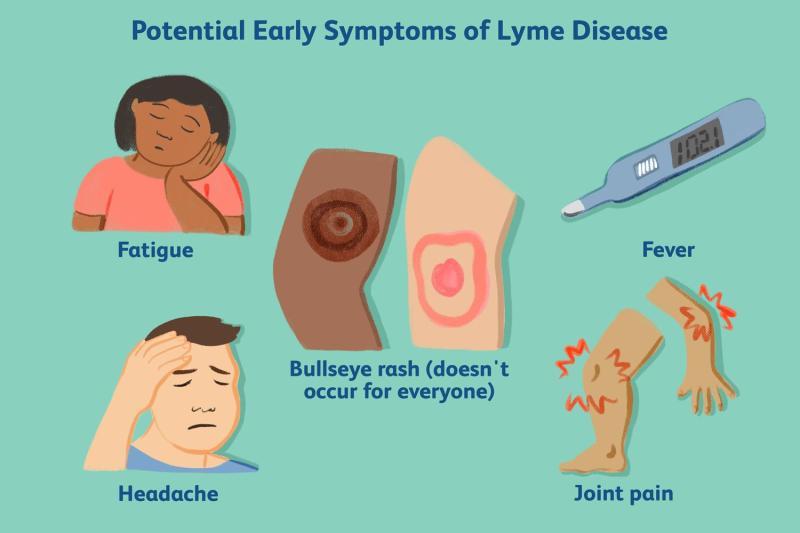The Evolution of Lyme Disease Diagnostics: Advances in Detection and Treatment

Lyme disease, caused by the bacterium Borrelia burgdorferi, is a tick-borne illness transmitted to humans through the bite of infected black-legged ticks. Early symptoms often include fever, headache, fatigue, and a characteristic skin rash called erythema migrans. If left untreated, the infection can spread to joints, the heart, and the nervous system, leading to more severe health issues. Early and accurate diagnosis is crucial for effective treatment and prevention of complications.
Review critical insights and findings from our Report in this sample - https://www.transparencymarketresearch.com/sample/sample.php?flag=S&rep_id=1658
Market Segmentation
The Lyme disease diagnostics market can be segmented based on diagnostic test types, sample types, and end-users:
Diagnostic Test Types:
•Serological Tests: These are the most commonly used initial tests, detecting antibodies produced in response to the infection. Enzyme-Linked Immunosorbent Assay (ELISA) and Western Blot are prominent examples. ELISA, known for its high sensitivity, accounted for a significant market share in 2022.
•Polymerase Chain Reaction (PCR) Tests: These tests detect the genetic material of Borrelia burgdorferi, offering high specificity.
•Others: Including culture tests and antigen detection tests.
Sample Types:
•Blood Samples: Widely used due to ease of collection and the ability to detect antibodies or bacterial DNA.
•Cerebrospinal Fluid (CSF): Utilized in cases with neurological symptoms.
•Others: Such as joint fluid or urine samples.
End-Users:
•Hospitals: Provide comprehensive diagnostic services.
•Diagnostic Laboratories: Offer specialized testing with faster turnaround times.
•Others: Including clinics and research institutes.
Regional Analysis
North America is anticipated to hold a substantial share of the global Lyme disease diagnostics market, primarily due to the high incidence rates in the United States and a well-established healthcare infrastructure. According to the Centers for Disease Control and Prevention (CDC), confirmed cases of Lyme disease in the U.S. increased by 44% from 1999 to 2019.
Europe also represents a significant market, with countries like Germany and Sweden reporting notable case numbers. The Asia-Pacific region is expected to experience steady growth, driven by expanding healthcare infrastructure and increased awareness about tick-borne diseases.
Competitive Landscape
The global Lyme disease diagnostics market is characterized by the presence of several key players:
•LabCorp: Offers a comprehensive range of diagnostic tests, including those for Lyme disease.
•Quest Diagnostics: Provides advanced testing services with a focus on accuracy and accessibility.
•Abbott Laboratories: Develops innovative diagnostic tools and has collaborated with global scientists to assess the impact of climate change on disease outbreaks.
•Bio-Rad Laboratories, Inc.: Specializes in life science research and clinical diagnostics.
•bioMérieux SA: Focuses on in vitro diagnostics and has a global presence.
•DiaSorin S.p.A: Offers a range of immunodiagnostic and molecular diagnostic tests.
•T2 Biosystems, Inc.: Developed the T2Lyme Panel, a direct-from-blood molecular diagnostic test that received Breakthrough Device Designation from the FDA in 2022.
•F. Hoffmann-La Roche AG: A global leader in diagnostics and pharmaceuticals.
•Meridian Bioscience, Inc.: Provides diagnostic solutions and life science raw materials.
•Quidel Corporation: Developed.
Contact:
Transparency Market Research Inc.
CORPORATE HEADQUARTER DOWNTOWN,
1000 N. West Street,
Suite 1200, Wilmington, Delaware 19801 USA
Tel: +1-518-618-1030
USA - Canada Toll Free: 866-552-3453
- Art
- Causes
- Crafts
- Dance
- Drinks
- Film
- Fitness
- Food
- Giochi
- Gardening
- Health
- Home
- Literature
- Music
- Networking
- Altre informazioni
- Party
- Religion
- Shopping
- Sports
- Theater
- Wellness


